#chalcidoidea
Text

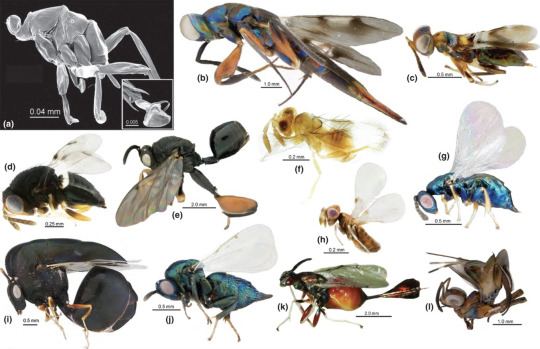
https://onlinelibrary.wiley.com/doi/full/10.1111/cla.12006
Galearia spp. are probably one the most ridiculous looking Eucharitid wasps I've ever seen. It is also a favourite. It looks like a weird spaceship or something. The first image is my drawing, the second image is a reference photo from the above provided link. Galearia (i) is pictured at the bottom left.
#hymenoptera#insect#entomology#wasp#wasps#apocrita#parasitica#Chalcidoidea#Eucharitidae#Galearia#TraditionalArt#Illustration
562 notes
·
View notes
Text


more ovipositor than wasp
zero clue who she is but she lives in a sandpaper fig fig that split open
318 notes
·
View notes
Text


Submitter comment: "this is a personal favorite of mine. the moby dick reference is well-deserved for the task of reworking what was essentially a burning dumpster fire of a taxon"
#submission#entomology#chalcidoidea#pteromalidae#literally in the paper they mention that pteromalidae has basically been used as a dumping ground#for anything that didn't fit any of the other established chalcidoid families#so it was this massive polyphyletic mess#taxonomy
695 notes
·
View notes
Text


Chalcidoid wasp
#nature#animals#photography#arthropods#bugblr#science#invertebrates#macro photography#insecta#insects#hymenoptera#wasps#chalcidoid#chalcidoidea
104 notes
·
View notes
Text



Chalcidoid Wasp
Unidentified, family Chalcidoidea
24/03/23 - NSW, Dapto
#invertebrates#invertblr#Arthropods#Arthropoda#bugs tw#insects#insect#insecta#insectblr#insects tw#bugs#bugblr#bug#entomology#Chalcidoidea#unidentified#Chalcidoid Wasps#Hymenoptera#wasps
28 notes
·
View notes
Text
Uncharismatic Fact of the Day
Just because bees and wasps can look alike, that doesn't mean they're friends. In fact, many types of wasps will gladly parasitise their black and yellow counterparts; for example, chalcid wasps will sneak into the nests of mason and leafcutter bees to lay up to 50 inside a developing bee larva, which then becomes food for the new hatchlings!

(Image: A female Brachymeria femorata by Bogdan Wiśniowski)
If you like what I do, consider leaving a tip or buying me a ko-fi!
52 notes
·
View notes
Text
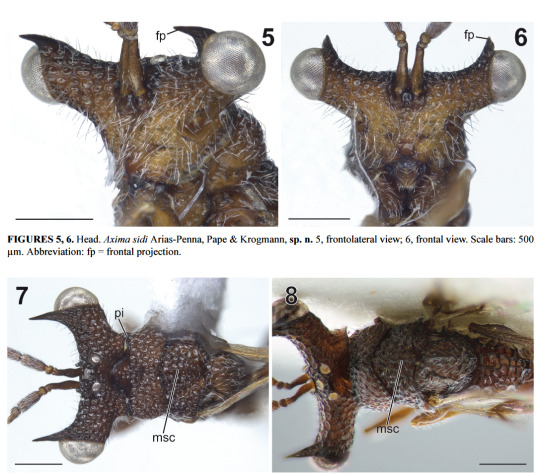

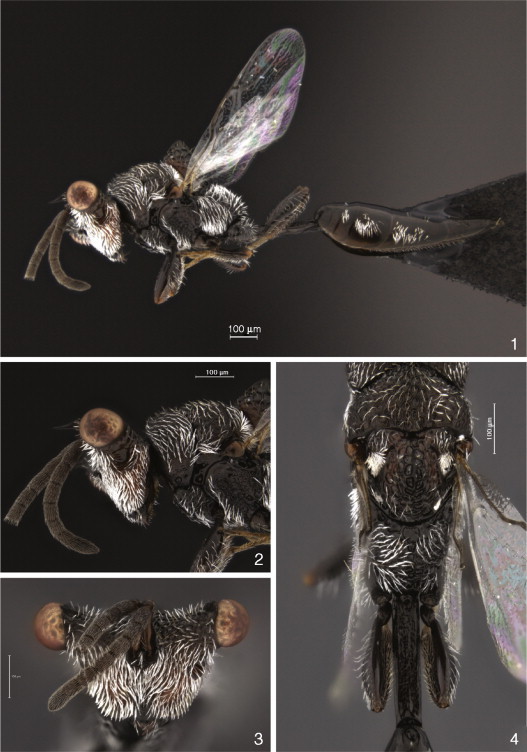
everyone knows about the stalk-eyed flies by now but did you hear about Axima, the genus of stalk-eyed wasps that dropped recently
source 1 2
#hymenoptera#chalcidoidea#eurytomidae#axima#parasitoids#entomology#i spent my whole lunch break today just looking up funny chalcidoid wasps
214 notes
·
View notes
Photo
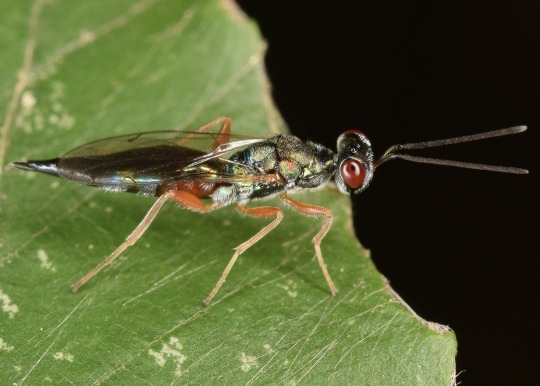
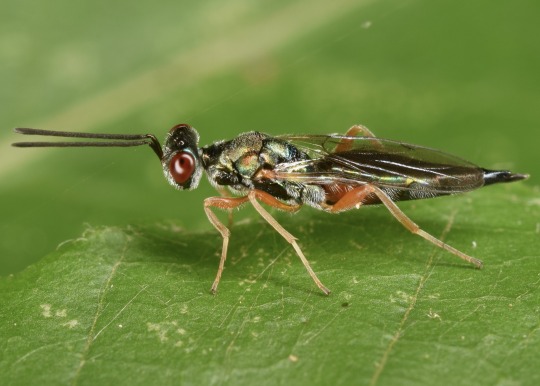
Ogloblinisca americana
153 notes
·
View notes
Text
i’m taking this 2 week all day wasp id zoom course and it’s kicking my fucking ass jesus christ
1 note
·
View note
Text
#1842 - Fam. Eulophidae
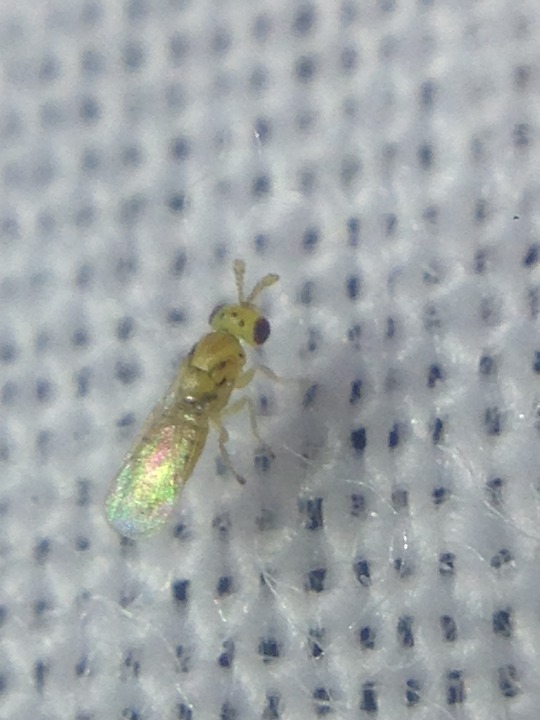
A minute wasp attracted to a light trap in Samson, Perth, Western Australia.
Most likely a parasite of Torymid gall-forming wasps, according to Andras Szito at the AgDept, who identified it for me and only managed to do so because he’d received a gall-infested eucalypt to ID the same day.
As he said “Microhymenoptera is a separate world. Mr Boucek, the author of the Australian Chalcidoidea book, once stated; after 30 years of studying them you can say that you started to get to know them. Who has 30 years to study them? I remember, there are genera with well over one thousand species in them. Since most parasitic wasps are highly host specific, I am sure their species number well exceeds the beetle species number.”
Eulophids are tiny, and difficult to study, but most of the 4300+ species are parasitoids of other arthropods. At least one is a parasitoid of aquatic beetles. Many are host-specific, but Aprostocetus hagenowii which is used as a biocontrol of cockroaches in the US, also targets bark beetles and hatchet wasps - the latter themselves parasitoids of cockroach eggs.
12 notes
·
View notes
Text
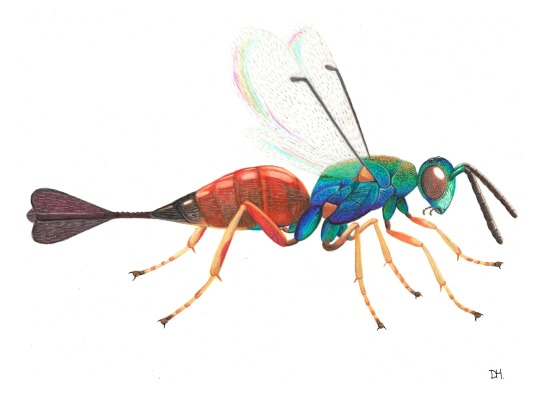
If someone asked me what my favourite wasp was, I honestly wouldn't be able to answer because there are too many cool ones! It would be shameful to not draw a Cameronella, so here it is! This subject was way easier than the Eutrichosoma from before, it was actually therapeutic in comparison.
#hymenoptera#insect#entomology#wasp#wasps#apocrita#parasitica#Pteromalidae#Colotrechinae#Cameronella#TraditionalArt#Illustration#DartTailedWasp#Chalcidoidea
469 notes
·
View notes
Text
Animal practice 37

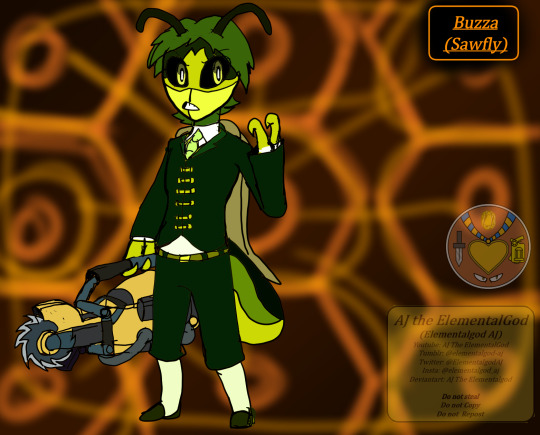

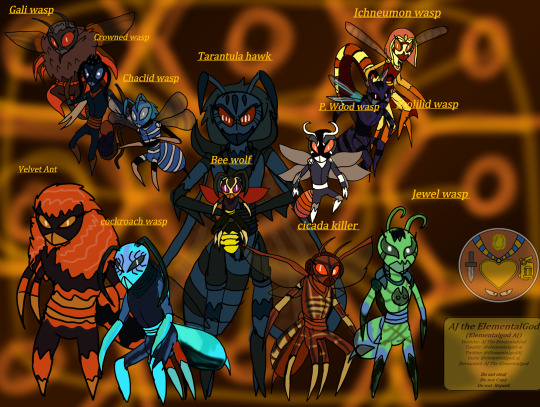


Panarthropoda
Arthropoda 4
Hexapod 4
Hymenoptera 1
Emorossa (Ant/Bee/wasp/termite hybrid)
Symphyta
Buzza (sawfly)
Wild wasps
Crimson the abominable (wild wasp)
Orussoidea
Parasitoid wood wasp
Stephanoidea
Crowned wasp
Ichneumonoidea
Ichneumon wasp
Cynipoidea
Gall wasp
Chalcidoidea
Chalcid wasp
Chrysididae
Jeweled wasp
Mutillidae
Velvet ant
Pompiliidae
Spider wasp/Tarantula hawk
Scoliidae
Scoliid wasp
Ampulicidae
Cockroach wasp
Crabronidae
Cicada killer
Beewolf
#the watchful eye#watchful eye#my oc#my ocs#my art#elementalgod aj#aj the elementalgod#isle 0#toonverse oc#o'kong family#neo demons#earthdemons#anthro allies#panarthropoda#arthropods#hexapods#insects#Hymenoptera#sawfly#wild wasps#spider wasp#velvet ant#cicada killers#beewolf#cockroach wasp#jeweled wasp#ichneumonid wasp#bees#ants#wasps
4 notes
·
View notes
Text
Les Hyménoptères. Morphologie et nomenclature
See on Scoop.it - Insect Archive
La tête porte les pièces buccales, les antennes, les yeux composés et dorsalement trois ocelles disposés en triangle. Les antennes sont formées d'un nombre d'articles variable selon les taxons et parfois selon les sexes d'une même espèce. Chez la plupart des Apoidea et des Vespoidea, les antennes des mâles ont 13 articles et celles des femelles 12. L'article le plus basal est appelé scape, le suivant pédicelle, les autres constituent le flagelle. Chez certains Chalcidoidea, les premiers articles du flagelle, étroits et annulaires, sont appelés anneli.
Morphologie et nomenclature des Hyménoptères
OPIE-Insectes
Les Hyménoptères, Hymenoptera - Par Claire Villemant
http://insectes.xyz/hymenos.htm
[Image] Pièces buccales d'Apoidea
0 notes
Text
Scoperta la più antica famiglia di vespe gioiello nell'ambra cretacea del Libano
Le vespe gioiello (Chalcidoidea) sono uno dei gruppi di insetti più diversi, con oltre 120.000 specie descritte e una diversità reale stimata in quasi 1 milione. I calcidi sono vespe parassitoidi che attaccano altri insetti su cui depongono le uova per nutrirsi e crescere all’interno dell’ospite.
L’evoluzione e l’origine di questo immenso gruppo ha lasciato perplessi gli scienziati per decenni.…

View On WordPress
0 notes
Text
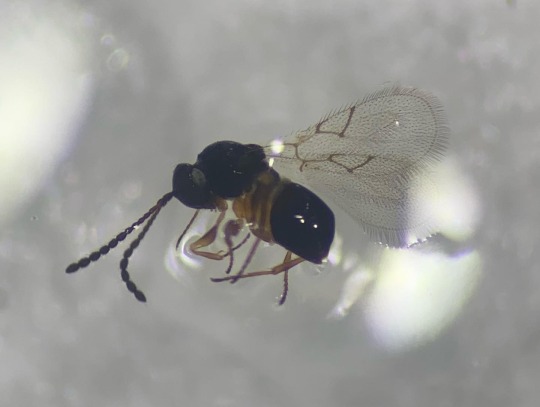
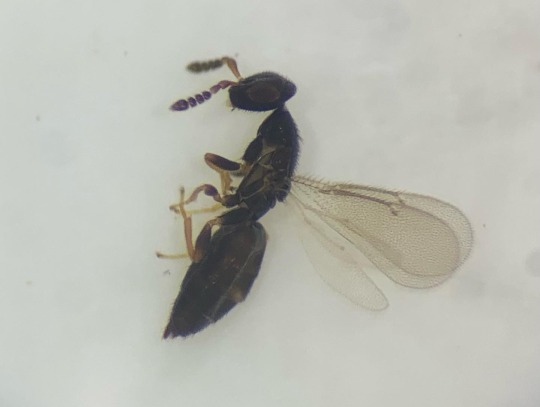

Tiny parasitoid wasps (: though they are very difficult to ID I think they are very fascinating
26 notes
·
View notes
Photo
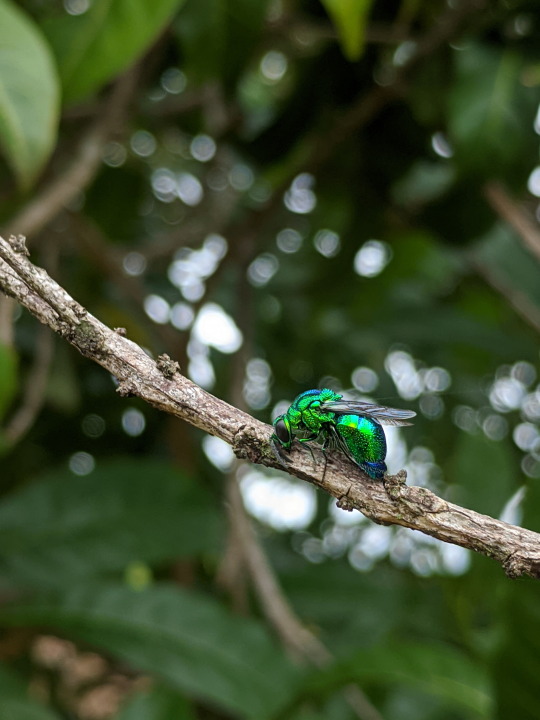


✥ Stilbum cyanurum, “Large Cuckoo Wasp” - Chrysididae
From Brisbane insects - “Most species are external parasites of other wasp larvae. Females lay eggs in nest of other wasps (Eumeninae of Vespidae and Sphecidae) while the nest host collect food for larvae. Cuckoo Wasp larvae hatch and feed on the food or the host larvae.”
30/08/20 - El Arish, QLD
#Stilbum cyanurum#large cuckoo wasp#Chrysididae#cuckoo wasps#parasite wasps#wasps#wasp#MEGALYRIDAE#EVANIOIDEA#ICHNEUMONOIDEA#CHALCIDOIDEA#CHRYSIDIDEA#hymenoptera#Apocrita#blue#Blue Aesthetic#bugs#bugblr#bugs tw#insect#insecta#insects tw#insectblr#insects#Entomology#arthropods#arthropoda
147 notes
·
View notes